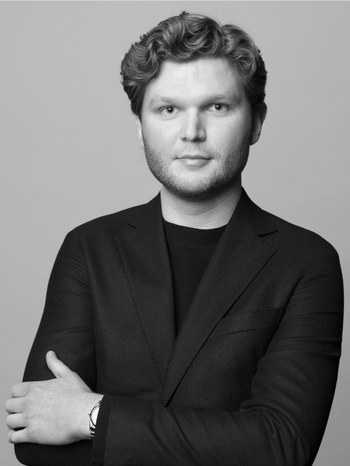Gunnar Asplund
a set of eight mahogany chairs, Svenska Möbelfabrikerna, Bodafors, ca 1934-35, for the Bredenberg Department Store.
Seats upholstered in leather, manufacturer's label A·B· SVENSKA MÖBELFABRIKERNA BODAFORS. Height 70 cm, seat height 43 cm.
Designed ca 1934-35 for the lunch and tea room in the Bredenberg Department Store located at the intersection of Mäster Samuelsgatan and Drottninggatan in Norrmalm, central Stockholm. The store, designed by Asplund and built in 1934-35, is one of the foremost examples of Swedish functionalism. The model was subsequently exhibited at the Exposition Internationale des Arts et Techniques dans la Vie Moderne in Paris in 1937.
Wear, damage and repairs.
Provenance
Bredenberg Department Store, Stockholm.
Literature
Åke Stavenow (ed.), "FORM", 1937, model illustrated p. 157 in connection with the exhibition in Paris.
Åke H. Huldt (ed.), "Konsthantverk och hemslöjd i Sverige 1930‑1940", Almqvist & Wiksell 1941, model illustrated p. 452.
Dan Gordan, "Svenska stolar och deras formgivare 1899‑2013", Norstedts 2014, model illustrated p. 97.
Designer
Gunnar Asplund is considered one of the most significant and leading architects during the interwar period, both in Sweden and internationally. Asplund is seen as one of the foremost representatives of 1920s Nordic classicism, with the Skandia Theatre (1922) and the Stockholm Public Library (1928) as prominent examples. He was also one of the pioneers of functionalism, which he introduced in Sweden with the Stockholm Exhibition in 1930, where he was the chief architect.
Read more








































































